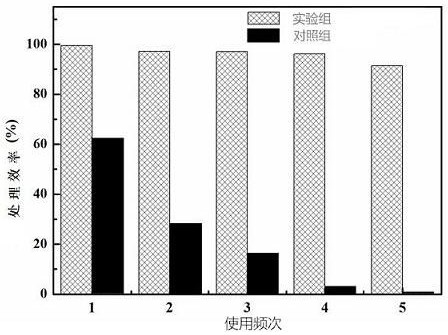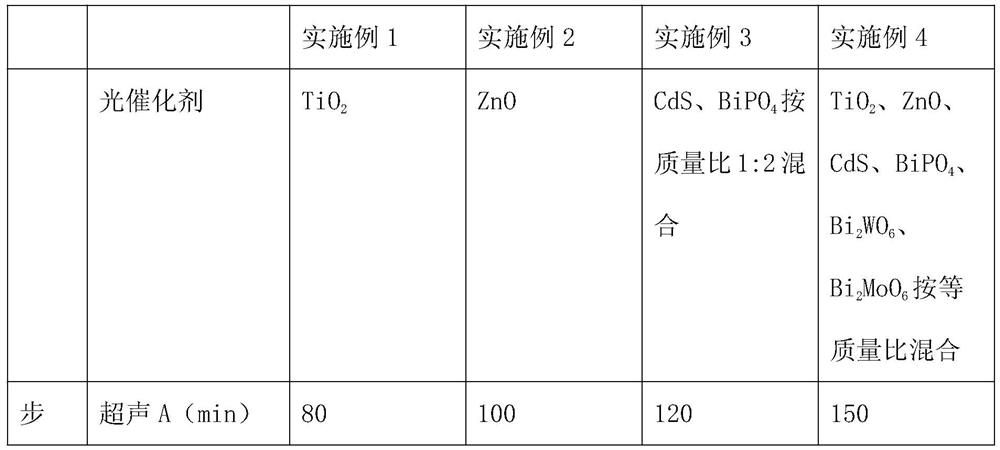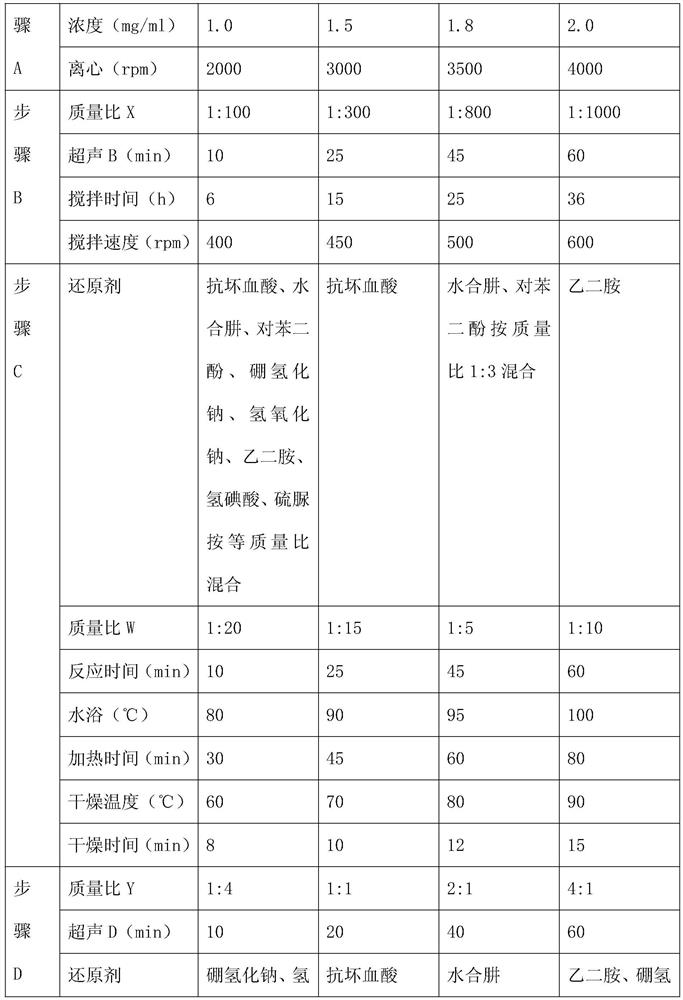A graphene hybrid photocatalyst hydrogel
A photocatalyst and graphene technology, applied in the field of nanomaterials, can solve the problems of difficulty in meeting technical and economic requirements at the same time, inability to efficiently remove organic pollutants in water, low catalytic activity and low treatment efficiency, etc., and achieve in-situ catalytic degradation. Enhanced capability, improved removal and mineralization performance, and addressed effects that are difficult to remove efficiently
- Summary
- Abstract
- Description
- Claims
- Application Information
AI Technical Summary
Problems solved by technology
Method used
Image
Examples
preparation example Construction
[0029] Its preparation method comprises the following steps:
[0030] A. Mix graphite oxide with deionized water and disperse it by ultrasonic wave for 80-150 minutes to prepare a graphene oxide aqueous solution with a concentration of 1.0-2.0mg / ml, and then perform mechanical peeling. The centrifugation condition for mechanical peeling is 2000-4000rpm. Unexfoliated graphene oxide was then removed by centrifugation.
[0031] Described graphite oxide adopts Hummers ' method to prepare, and concrete preparation method is: utilize 3.0g graphite powder to put in the three-neck round-bottomed flask, place round-bottomed flask in ice bath and fix, add 70mL vitriol oil and stir 10min, Mix graphite powder and concentrated sulfuric acid evenly. Then add 1.5g of sodium nitrate. After the sodium nitrate is dissolved, slowly add potassium permanganate three times the amount of graphite powder into the above mixed solution, and continue stirring for 2.5 hours. During the stirring process,...
Embodiment 1~4
[0037] Embodiments 1-4 are the same as the above-mentioned preparation reaction steps, but the different reaction conditions are shown in the table below. Among them, "ultrasound A" represents the time of ultrasonic dispersion in step A, "concentration" represents the concentration of the graphene oxide aqueous solution, "centrifugation" represents the centrifugal condition during mechanical peeling, and "mass ratio X" represents the concentration of graphene oxide and graphene oxide in step B. The mass ratio of the photocatalyst, "ultrasonic B" indicates the time of ultrasonic dispersion in step B, "mass ratio W" indicates the mass ratio of photocatalyst to reducing agent in step C, and "mass ratio Y" indicates the graphene hybridization in step D The quality of the photocatalyst and the graphene oxide aqueous solution, "ultrasonic D" indicates the time of ultrasonic dispersion in step D, and "mass ratio Z" indicates the mass ratio of the graphene hybrid photocatalyst to the a...
PUM
 Login to View More
Login to View More Abstract
Description
Claims
Application Information
 Login to View More
Login to View More - R&D
- Intellectual Property
- Life Sciences
- Materials
- Tech Scout
- Unparalleled Data Quality
- Higher Quality Content
- 60% Fewer Hallucinations
Browse by: Latest US Patents, China's latest patents, Technical Efficacy Thesaurus, Application Domain, Technology Topic, Popular Technical Reports.
© 2025 PatSnap. All rights reserved.Legal|Privacy policy|Modern Slavery Act Transparency Statement|Sitemap|About US| Contact US: help@patsnap.com



